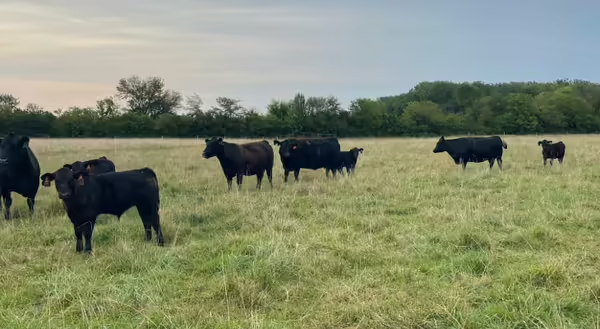
Fall calving herds are approaching breeding season. While general breeding practices are similar to spring calving herds, breeding fall calving cows can pose some unique challenges.
Tips for a successful breeding season
- Maintain cows in a body condition score of 5 or 6.
- Avoid negative planes of nutrition. Cows losing weight at the time of breeding generally do not breed well.
- Conduct bull soundness exams prior to breeding season to ensure bull productivity
- Invest in a good mineral program.
- Use low-stress animal handling. Avoid transportation of cows 4 to 45 days post-breeding.
- Consider synchronization and timed-AI to front-load the calving season
Nutrition and environmental differences between spring and fall calving herds are important to understand and manage. Depending on location, heat and cold stress can both be factors in the fall breeding season. If farther south, heat stress at the beginning of the season can still be a concern. So, ensuring shade, good water availability, and good ventilation is important.
In contrast, winter weather can be a challenge late in the fall breeding season. Cold stress can be mitigated with windbreak, bedding, and shelter. Cold weather, freezing conditions, and icy terrain can make breeding more difficult and dangerous for both the cow and the bull. Keeping cattle on solid ground and away from rough terrain can reduce injury risk. If housing cows in lots, pen conditions and stocking rate can greatly impact expression of estrus and safety of a natural breeding scenario.
As winter sets in, grazing opportunities decrease, and rations shift to harvested feeds. Thus, stored forages and feedstuffs need to be evaluated. Test forages for nutrient analysis. This will aid in least-cost ration balancing and ensure adequate nutrients are being delivered in the ration. If growing conditions were adverse, testing for nitrates, mycotoxins, and bacteria could be necessary. Feed contaminants could interfere with hormones and cause health challenges leading to breeding failure.
Bulls also need to be monitored. Bulls should be in good body condition. If drought has caused bulls to be thin, they will need to be more closely monitored and fed to ensure condition doesn’t become too low. Bulls in poor body condition can be more susceptible to lower fertility. Low temperatures can cause scrotal frostbite which can decrease semen quality. Keep housing areas bedded to reduce the risk of frostbite. Make sure bulls have been semen tested recently and approximately 30 days prior to the breeding season.
If artificially inseminating, maintaining proper temperature of synchronization drugs, and the semen itself are very important to guard conception rates. If thawed semen or drug is left unattended, there is potential for temperature changes that could result in damage and reduce efficacy.